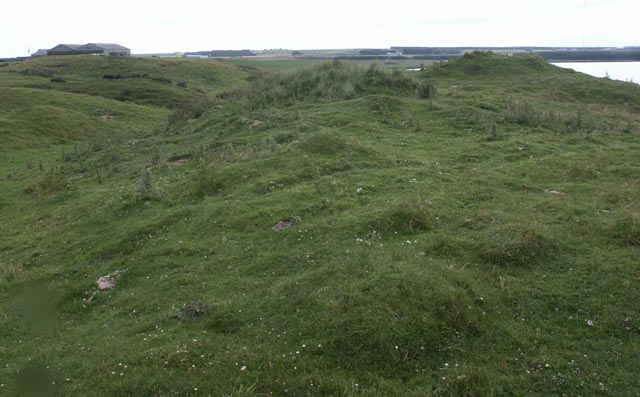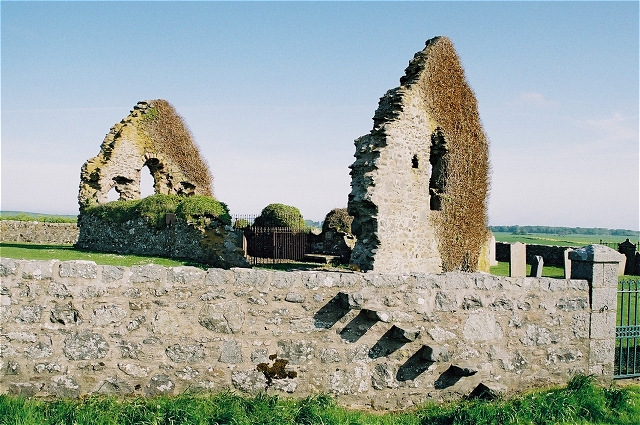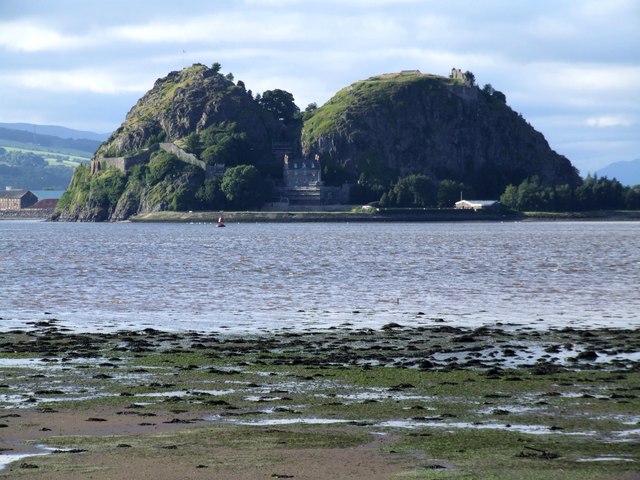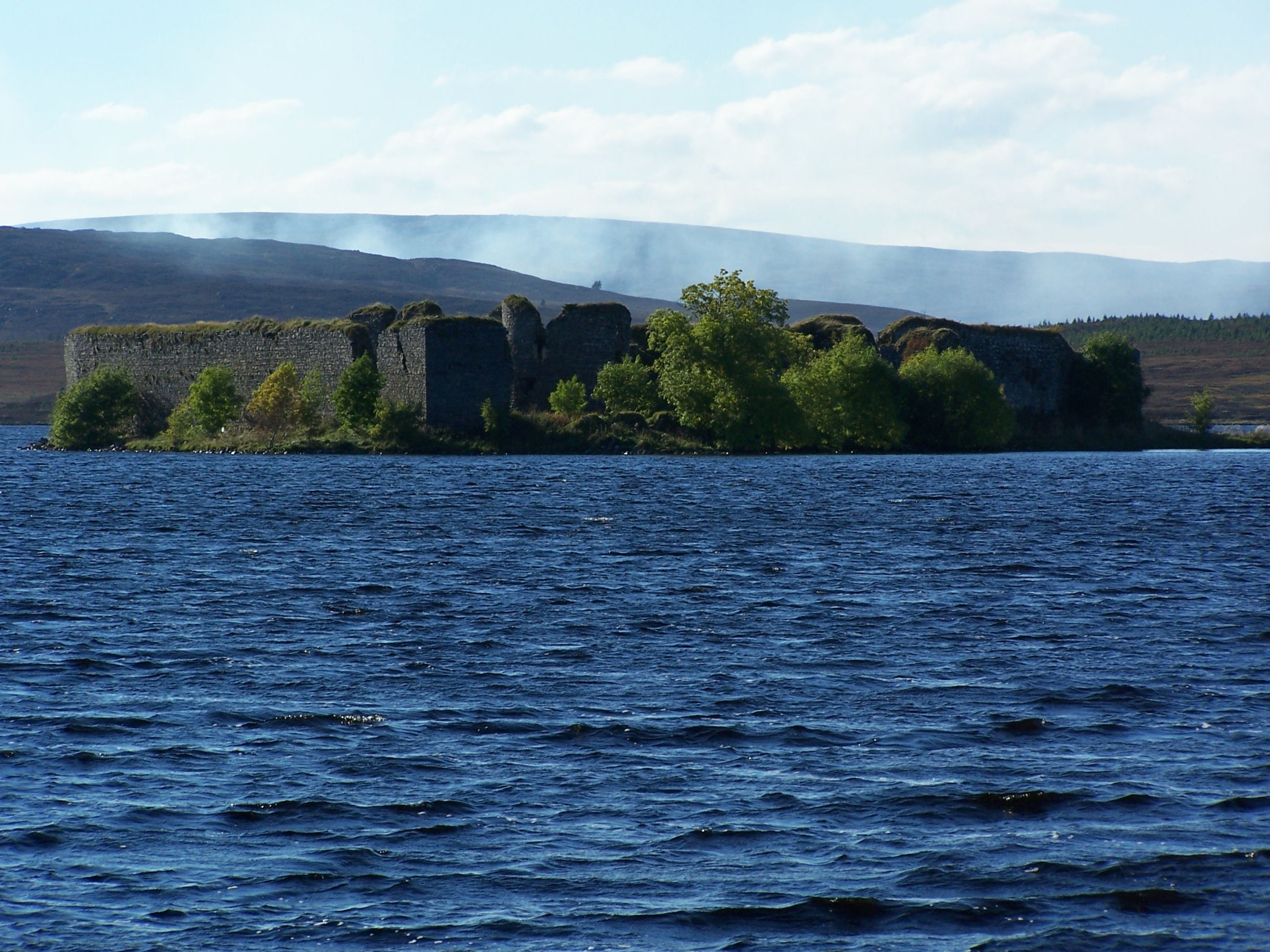|
Castle Of Rattray
The Castle of Rattray was a medieval Scottish castle, with multiple variations on its structure over approximately six centuries. Originally built as a ''"late 12th- or early 13th century defensive motte"'' it provided protection for Starny Keppie Harbour and Rattray village. Sometime between 1214 and 1233 it was upgraded by William Comyn, jure uxoris Earl of Buchan before being destroyed in the 1308 Harrying of Buchan. After Comyn's timber castle was burned down, it was replaced by a stronger stone castle which was engulfed during a 1720 sand storm along with nearby Rattray village. After the storm, the castle was not dug out and remains covered to this day. The castle was described by W. Douglas Simpson as one of the nine castles of the Knuckle, referring to the rocky headland of north-east Aberdeenshire. Location The castle was sited on Castlehill, on the south bank of the now-closed estuary flowing into Strathbeg Bay- the north bank was protected by the opposite Lon ... [...More Info...] [...Related Items...] OR: [Wikipedia] [Google] [Baidu] |
Rattray, Aberdeenshire
Rattray (historic: Rettre; occasionally: Rattery; Scottish Gaelic: ''Raitear''), ''(found at )'' had been settled as far back as 4000 BC and was named a Royal Burgh in 1564 by Mary, Queen of Scots, "to put an end to the disputes about superiority over it between William Keith, 4th Earl Marischal and George Hay, 7th Earl of Erroll". The ancient burgh was located near to Crimond, but the village was largely destroyed and never recovered after a storm in the 18th century that covered it in shifting sands from the nearby dunes at Rattray Head. However, there is still a small modern settlement in the area. Features The nearby lagoon, ''Strathbeg Bay (also known as Strathbeg Water or Water of Rattray)'', had been an "open estuary which was navigable to trading ships" suiting itself to ''Starny Keppie'' harbour around which Rattray flourished. However, by 1654, the harbour was silting up badly and was finally cut off when shifting sands during a massive 1720 storm cut off the lagoon ... [...More Info...] [...Related Items...] OR: [Wikipedia] [Google] [Baidu] |
John Comyn, Earl Of Buchan
John Comyn, 3rd Earl of Buchan (circa 1260 – 1308) was a chief opponent of Robert the Bruce in the civil war that paralleled the War of Scottish Independence. He should not be confused with the better known John III Comyn, Lord of Badenoch, who was his cousin, and who was killed by Bruce in Dumfries in March 1306. Confusion between the two men has affected the study of this period of history. Buchan was the representative of a family that had long dominated the politics of Scotland. He was defeated by Bruce at the Battle of Barra and was subsequently forced to flee to England. Bruce's Harrying of Buchan destroyed support for the Comyns in northern Scotland. This defeat, together with Comyn's death that year, produced a significant and lasting shift in the balance of power in Scotland. Comyns of Buchan The Comyns, a family of Norman origin, first made their appearance in Scotland during the reign of David I. In 1136 William Comyn, who had formerly been in the service of ... [...More Info...] [...Related Items...] OR: [Wikipedia] [Google] [Baidu] |
Examples Of Feudalism
Examples of feudalism are helpful to fully understand feudalism and feudal society. Feudalism was practiced in many different ways, depending on location and time period, thus a high-level encompassing conceptual definition does not always provide a reader with the intimate understanding that detailed historical examples provide. Western European Feudalism 12th century England Feudalism in 12th century Norman England was among the better structured and established in Europe at the time. However, it could be structurally complex, which is illustrated by the example of the English feudal barony, feudal barony of Stafford as described in a survey of knight's fees made in 1166 and recorded in ''The Black Book of the Exchequer''. This was a roll of parchment or several such, recording the quantity and tenant of each knight's fee held ''in capite''. It was a record commissioned by the Treasury as the knight's fee was the primary basis for assessing certain types of taxation, for ex ... [...More Info...] [...Related Items...] OR: [Wikipedia] [Google] [Baidu] |
Feudal
Feudalism, also known as the feudal system, was the combination of the legal, economic, military, cultural and political customs that flourished in Middle Ages, medieval Europe between the 9th and 15th centuries. Broadly defined, it was a way of structuring society around relationships that were derived from the holding of land in exchange for service or labour. Although it is derived from the Latin word ''feodum'' or ''feudum'' (fief), which was used during the Medieval period, the term ''feudalism'' and the system which it describes were not conceived of as a formal political system by the people who lived during the Middle Ages. The classic definition, by François Louis Ganshof (1944),François Louis Ganshof (1944). ''Qu'est-ce que la féodalité''. Translated into English by Philip Grierson as ''Feudalism'', with a foreword by F. M. Stenton, 1st ed.: New York and London, 1952; 2nd ed: 1961; 3rd ed.: 1976. describes a set of reciprocal legal and Medieval warfare, military ... [...More Info...] [...Related Items...] OR: [Wikipedia] [Google] [Baidu] |
Earl Of Erroll
Earl of Erroll () is a title in the Peerage of Scotland. It was created in 1453 for Sir William Hay. The subsidiary titles held by the Earl of Erroll are ''Lord Hay'' (created 1449) and ''Lord Slains'' (1452), both in the Peerage of Scotland. The Earls of Erroll also hold the hereditary office of Lord High Constable of Scotland. The office was once associated with great power. The Earls of Erroll hold the hereditary title of Chief of Clan Hay. The Earl of Erroll is one of four peers entitled to appoint a private pursuivant, with the title "Slains Pursuivant of Arms".p60-61, Bruce, Alistair, Keepers of the Kingdom (Cassell, 2002), Earl of Erroll is also the name of a Scottish highland dance, danced today at Highland games around the world. The family seat is Woodbury House, near Everton, Bedfordshire. History The Hay clan descends from Scoto-Norman knight Guillaume de la Haye, who first appears on the records circa 1160. Gilbert de la Hay (died April 1333), ancestor of ... [...More Info...] [...Related Items...] OR: [Wikipedia] [Google] [Baidu] |
Earl Marischal
The title of Earl Marischal was created in the Peerage of Scotland for William Keith, the Great Marischal of Scotland. History The office of Marischal of Scotland (or ''Marascallus Scotie'' or ''Marscallus Scotiae'') had been hereditary, held by the senior member and Chief of Clan Keith, since Hervey ''(Herveus)'' de Keith, who held the office of Marischal under Malcolm IV and William I. The descendant of Herveus, Sir Robert de Keith (d.1332), was confirmed in the office of Great Marischal of Scotland by King Robert the Bruce around 1324. Robert de Keith's great-grandson, William, was raised to the Peerage as Earl Marischal by James II in about 1458. The peerage died out when George Keith, the 10th Earl, forfeited it by joining the Jacobite Rising of 1715. The role of the Marischal was to serve as custodian of the Royal Regalia of Scotland, and to protect the king's person when attending parliament. The former duty was fulfilled by the 7th Earl during the Wars of the Three Ki ... [...More Info...] [...Related Items...] OR: [Wikipedia] [Google] [Baidu] |
Royal Burgh
A royal burgh () was a type of Scottish burgh which had been founded by, or subsequently granted, a royal charter. Although abolished by law in 1975, the term is still used by many former royal burghs. Most royal burghs were either created by the Crown, or upgraded from another status, such as burgh of barony. As discrete classes of burgh emerged, the royal burghs—originally distinctive because they were on royal lands—acquired a monopoly of foreign trade. An important document for each burgh was its burgh charter, creating the burgh or confirming the rights of the burgh as laid down (perhaps verbally) by a previous monarch. Each royal burgh (with the exception of four 'inactive burghs') was represented in the Parliament of Scotland and could appoint bailie A bailie or baillie is a civic officer in the local government of Scotland. The position arose in the burghs, where bailies formerly held a post similar to that of an alderman or magistrate (see bailiff). Baillies app ... [...More Info...] [...Related Items...] OR: [Wikipedia] [Google] [Baidu] |
Mary, Queen Of Scots
Mary, Queen of Scots (8 December 1542 – 8 February 1587), also known as Mary Stuart or Mary I of Scotland, was Queen of Scotland from 14 December 1542 until her forced abdication in 1567. The only surviving legitimate child of James V of Scotland, Mary was six days old when her father died and she inherited the throne. During her childhood, Scotland was governed by regents, first by the heir to the throne, James Hamilton, Earl of Arran, and then by her mother, Mary of Guise. In 1548, she was betrothed to Francis, the Dauphin of France, and was sent to be brought up in France, where she would be safe from invading English forces during the Rough Wooing. Mary married Francis in 1558, becoming queen consort of France from his accession in 1559 until his death in December 1560. Widowed, Mary returned to Scotland in August 1561. Following the Scottish Reformation, the tense religious and political climate that Mary encountered on her return to Scotland was further agitated by pro ... [...More Info...] [...Related Items...] OR: [Wikipedia] [Google] [Baidu] |
Robert II Of Scotland
Robert II (2 March 1316 – 19 April 1390) was King of Scots from 1371 to his death in 1390. The son of Walter Stewart, 6th High Steward of Scotland, and Marjorie, daughter of King Robert the Bruce, he was the first monarch of the House of Stewart. Upon the death of his uncle David II, Robert succeeded to the throne. Edward Bruce, younger brother of Robert the Bruce, was named heir presumptive but died childless on 3 December 1318. Marjorie Bruce had died probably in 1317 in a riding accident and Parliament decreed her infant son, Robert Stewart, as heir presumptive, but this lapsed on 5 March 1324 on the birth of a son, David, to King Robert and his second wife, Elizabeth de Burgh. Robert Stewart became High Steward of Scotland on his father's death on 9 April 1327, and in the same year Parliament confirmed the young Steward as heir should David die childless. In 1329 King Robert I died and his five-year-old son succeeded to the throne as David II under the guardianship of Thom ... [...More Info...] [...Related Items...] OR: [Wikipedia] [Google] [Baidu] |
Alexander Stewart, Earl Of Buchan
Alexander Stewart, Earl of Buchan, Alasdair Mór mac an Rígh, and called the Wolf of Badenoch (1343 – c. 20 July 1405), was the third surviving son of King Robert II of Scotland and youngest by his first wife, Elizabeth Mure of Rowallan. He was the first Earl of Buchan since John Comyn, from 1382 until his death. Alexander married the widowed Euphemia I, Countess of Ross, but they had no children. He did have a large family by his longtime mistress, Mairead inghean Eachainn. Alexander was Justiciar of Scotia for a time, but not an effective one. He held large territories in the north of Scotland before eventually losing a large part of them. Alexander is remembered for his destruction of the royal burgh of Elgin and its cathedral. His nickname was earned due to his notorious cruelty and rapacity, but there is no proof that it was used during his lifetime. Power and influence Known in charters as Alexander ''Senescalli'' (Latin for Steward), first noted when, on 14 August 13 ... [...More Info...] [...Related Items...] OR: [Wikipedia] [Google] [Baidu] |
Archibald Douglas (died 1333)
Sir Archibald Douglas (before 1298 – 19 July 1333) was a Scottish nobleman, Guardian of Scotland, and military leader. He is sometimes given the epithet "Tyneman" ( Old Scots: Loser), but this may be a reference to his great-nephew Archibald Douglas, 4th Earl of Douglas. He fought and died at the Battle of Halidon Hill. Early life The younger son of Sir William "le Hardi" Douglas, the Governor of the castle at Berwick-upon-Tweed, and his wife, Eleanor de Lovaine, Douglas was also half-brother of "the Good" Sir James Douglas, King Robert the Bruce's deputy. The earliest mention of Douglas is in 1320 when he received a charter of land at Morebattle in Roxburghshire and Kirkandrews in Dumfriesshire from King Robert. In 1324, he was recorded as being granted the lands of Rattray and Crimond in Buchan and the lands of Conveth, Kincardineshire, already being possession of Cavers in Roxburghshire, Drumlanrig and Terregles in Dumfriesshire, and the lands of West Calder in Midlo ... [...More Info...] [...Related Items...] OR: [Wikipedia] [Google] [Baidu] |
Henry De Beaumont
Henry de Beaumont (before 1280 – 10 March 1340), ''jure uxoris'' 4th Earl of Buchan and ''suo jure'' 1st Baron Beaumont, was a key figure in the Anglo-Scots wars of the thirteenth and fourteenth centuries, known as the Wars of Scottish Independence. Henry de Beaumont was a veteran campaigner who participated in every major engagement, from the Battle of Falkirk in 1298 to the Battle of Halidon Hill in 1333. Although not now a widely known figure, he was, nevertheless, of considerable military and political importance. His long experience in the Scottish wars led him to develop a battle technique later used to great effect at Crécy and Agincourt. As one of a group of Anglo-Scots nobles later known as the 'disinherited' — Englishmen whose Scottish lands had been forfeited – he was to do much to overturn the peace between England and Scotland established by the Treaty of Northampton and bring about a Second War of Scottish Independence. By his marriage shortly before 14 ... [...More Info...] [...Related Items...] OR: [Wikipedia] [Google] [Baidu] |







